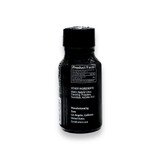Top 5 Mistakes to Avoid When Using Kratom
Kratom, derived from the leaves of the Mitragyna speciosa tree native to Southeast Asia, has gained popularity as a natural supplement for energy, focus, mood enhancement, and pain relief. While Kratom can be highly beneficial when used responsibly, improper usage can reduce its effectiveness or even lead to unwanted side effects. Whether you are a new user or a regular consumer, understanding common mistakes can help you maximize the benefits of Kratom safely and effectively.
In this article, we explore the top five mistakes to avoid when using Kratom, along with practical advice on how to use it responsibly
1. Taking Too Much Too Soon
One of the most common mistakes beginners make is overconsumption. Kratom is a potent herb, and using high doses without understanding your tolerance can lead to negative effects.
- Symptoms of overuse: nausea, dizziness, headaches, and drowsiness.
- Recommended approach: start with a low dose, typically 1–2 grams for powders, and gradually increase as needed.
- Why it matters: Taking too much initially can discourage new users and increase the risk of adverse reactions.
Gradually finding your ideal dose allows you to experience Kratom’s benefits safely and ensures a more pleasant experience.
2. Ignoring Strain Differences
Not all Kratom strains produce the same effects. Choosing the wrong strain for your goals is a frequent mistake:
- White vein strains: Best for energy, focus, and motivation.
- Green vein strains: Balanced effects, suitable for mild stimulation and mood enhancement.
- Red vein strains: Sedating, ideal for relaxation or pain relief.
Using a sedating red vein for energy or focus, for example, can result in fatigue rather than alertness. Understanding the properties of each strain ensures you get the desired effects without unwanted surprises.
3. Inconsistent or Improper Dosing
Many users make the mistake of inconsistent dosing or inaccurate measurement. This can affect both the effectiveness and safety of Kratom.
- Measure carefully: Use a scale or standardized measuring tool instead of guessing doses.
- Stick to a routine: Consistency helps the body respond predictably and reduces the risk of tolerance buildup.
- Avoid daily overuse: Frequent daily use can lead to reduced effectiveness over time.
Consistent and precise dosing ensures that Kratom delivers the expected effects and minimizes potential side effects.
4. Neglecting Timing and Context
When you take Kratom and the circumstances in which you consume it can significantly impact its effects. Common timing mistakes include:
- Taking sedating strains in the morning, leading to drowsiness.
- Taking stimulating strains late at night, which may interfere with sleep.
- Ignoring your stomach condition: Taking Kratom on a completely empty stomach may cause nausea, while a heavy meal can slow absorption.
To optimize results, align your Kratom strain and dose with your schedule and desired effects. For example, white or green strains in the morning enhance focus, while red strains in the evening promote relaxation.
5. Buying Low-Quality or Unverified Kratom
Another major mistake is purchasing Kratom from unreliable sources. Low-quality Kratom may be contaminated, under-dosed, or ineffective.
- Choose reputable vendors: Look for lab-tested products that provide transparency about alkaloid content and purity.
- Avoid cheap or suspicious products: Extremely low prices often indicate poor quality.
- Check packaging and labeling: Properly labeled products help ensure accurate dosing and safety.
High-quality Kratom ensures consistent results and minimizes the risk of contamination or side effects, making it a crucial part of responsible use.
Bonus Tip: Listen to Your Body
In addition to avoiding the top five mistakes, always pay attention to how your body responds. Everyone’s tolerance and reaction to Kratom differ:
- Track effects to determine which strains and doses work best for your needs.
- Adjust intake if you notice negative symptoms such as nausea, dizziness, or jitteriness.
- Take breaks periodically to prevent tolerance and maintain effectiveness.
Listening to your body ensures that Kratom remains a safe and beneficial supplement over the long term.
Conclusion
Kratom can be a powerful natural tool for energy, focus, mood enhancement, and pain relief when used correctly. Avoiding these common mistakes—overdosing, ignoring strain differences, inconsistent dosing, improper timing, and buying low-quality products—helps ensure a safe and effective experience.
By starting with low doses, understanding strain properties, timing consumption appropriately, and sourcing high-quality products, users can enjoy the full benefits of Kratom while minimizing risks. Responsible use, combined with awareness of your body’s response, makes Kratom a versatile and reliable addition to a wellness routine.











